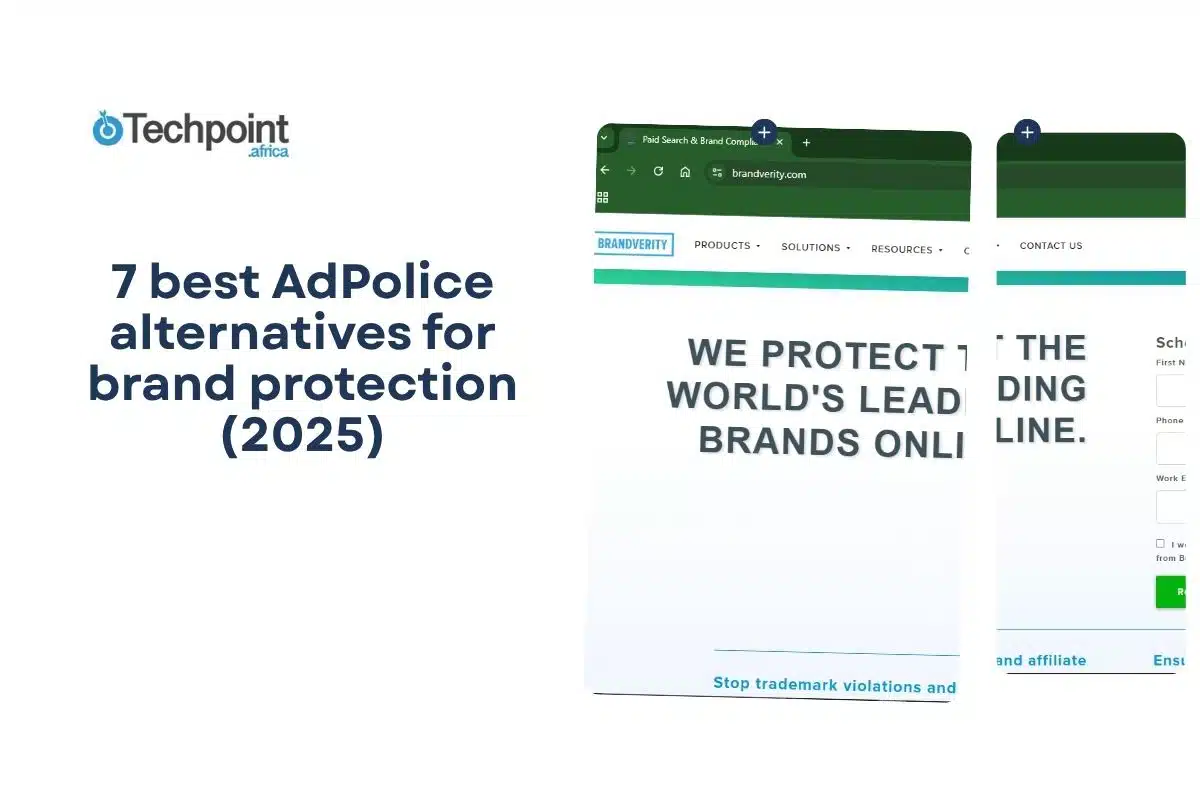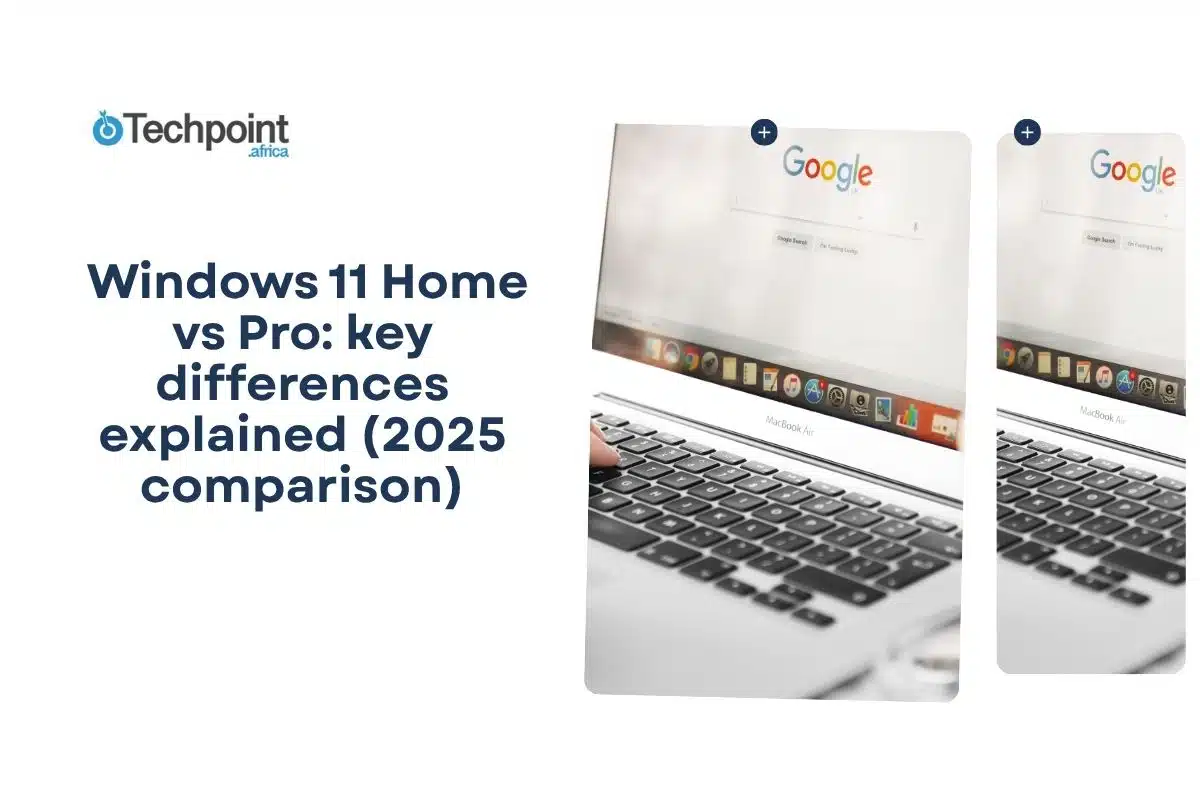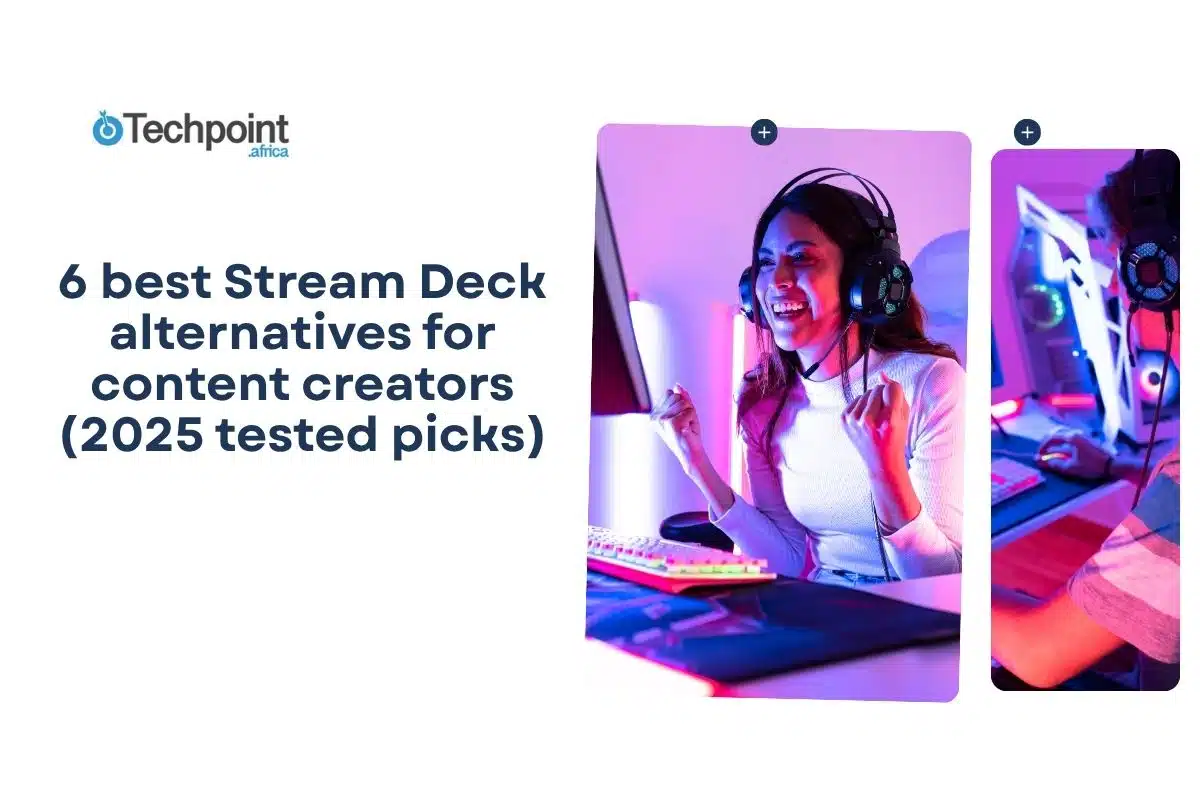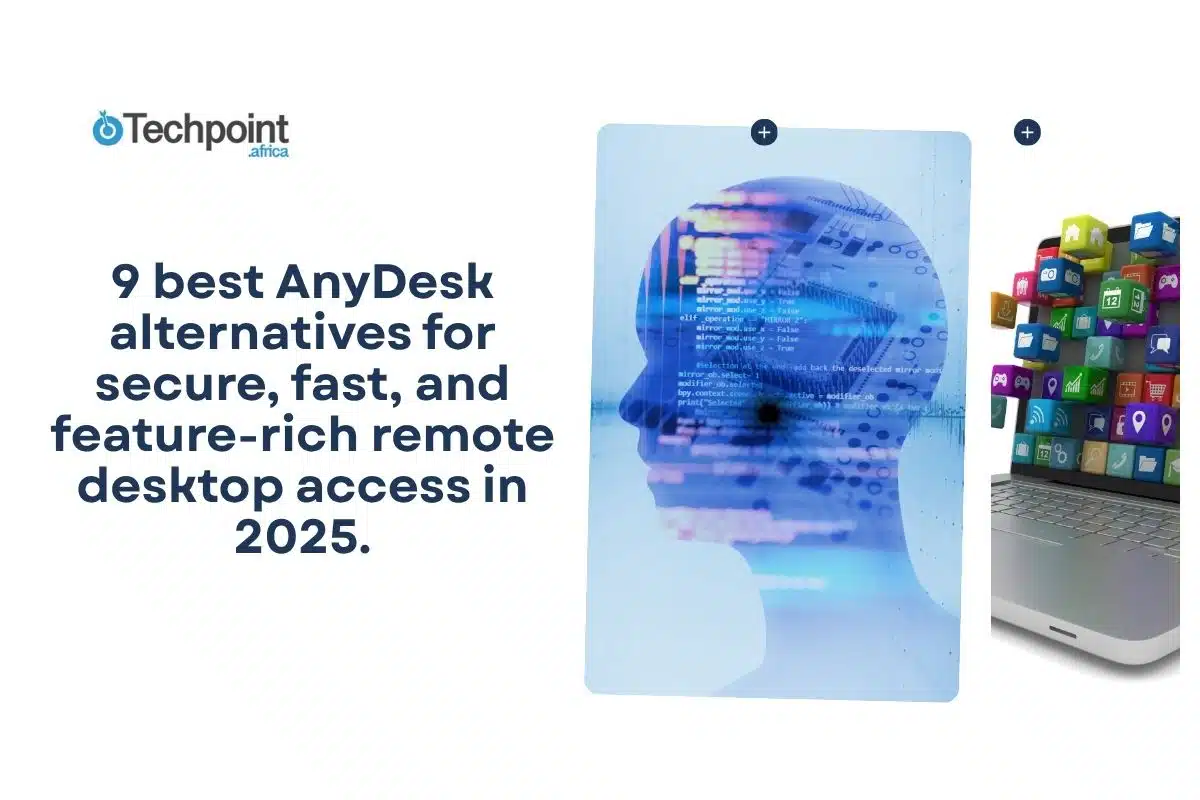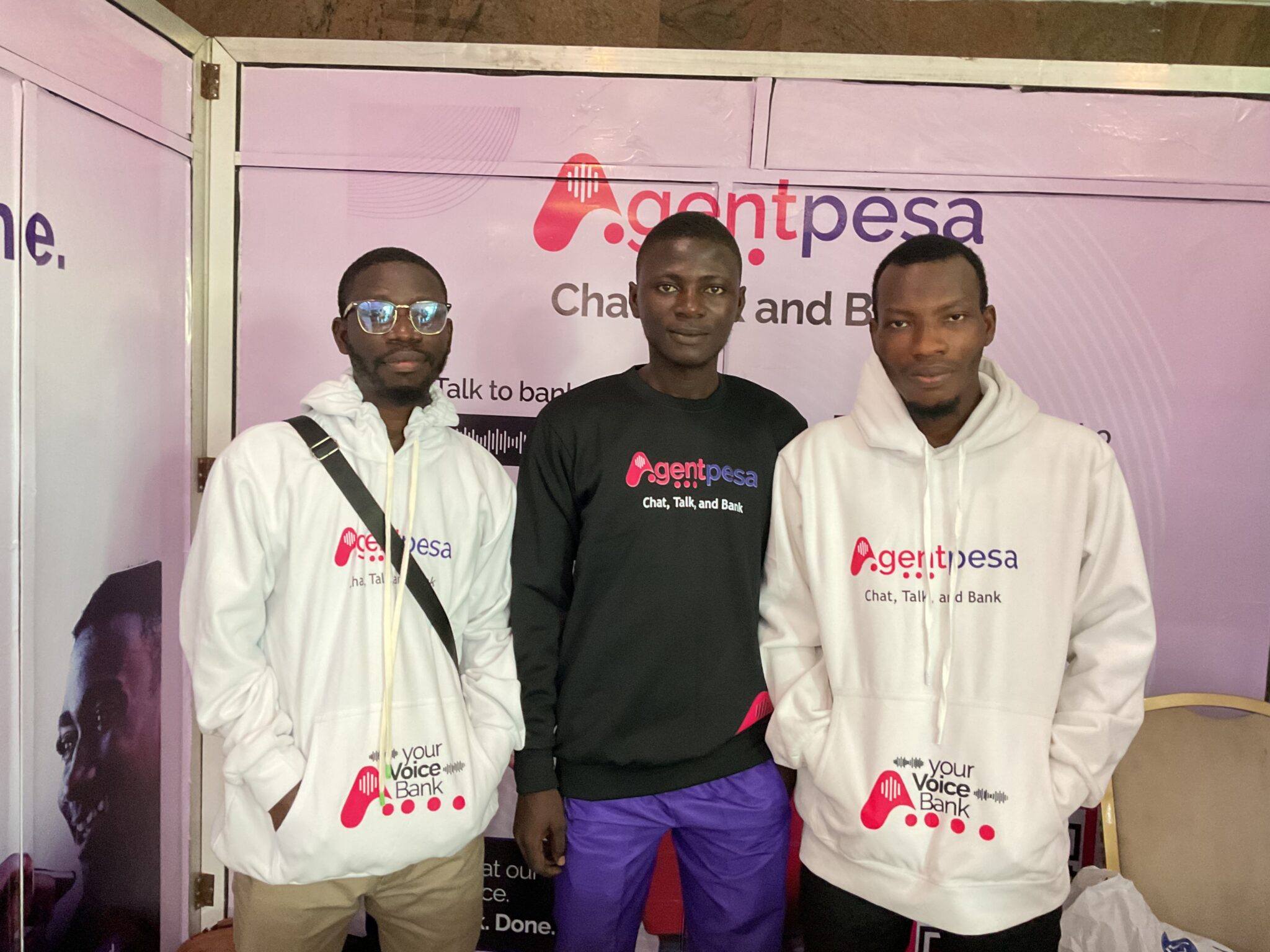When I first heard about tools for brand protection, I honestly didn’t get the hype. I remember wondering how the software would protect a brand. It felt abstract, almost unnecessary.
But the more I dug in, the more I realised the online world is way wilder than the usual hacks, breaches, and fraud headlines we’re used to. Turns out, there are entire networks of shady individuals and fake businesses waiting to borrow or steal your brand identity, only to lure your customers, drain your reputation, or just burn everything down for fun or profit.
Some will clone your website. Others will impersonate you on marketplaces. A few will even run ads using your brand name and make it look like you’re the scammer.
In these perilous internet streets, AdPolice (yes, the name fits) has become one of the most popular brand protection tools. It monitors hundreds of search engines and shopping platforms to identify anyone trying to hijack your brand and helps you take action before things get out of hand.
But AdPolice isn’t the only sheriff in town.
The brand-protection space has evolved into a comprehensive ecosystem, featuring tools that provide enhanced multi-channel monitoring, AI-powered predictive analysis, improved reporting dashboards, and more flexible pricing options. In this article, I’ll walk you through the 7 best AdPolice alternatives for brand protection in 2025.
TL;DR: Key takeaways
- Brand abuse online goes far beyond hacks. Scammers run fake ads, clone websites, and impersonate you to steal customers.
- AdPolice is solid, but tools like BrandVerity, The Search Monitor, and Red Points offer stronger multi-channel protection and automation.
- When choosing an alternative, prioritise the scope of monitoring, automation, AI features, and geographic coverage.
What is AdPolice?
AdPolice is designed for brands that want tighter control over how their name appears in paid search campaigns. It excels in affiliate fraud detection and brand bidding protection, essentially helping you identify competitors (and the occasional rogue affiliate) attempting to hijack your brand keywords. AdPolice is best for large brands with complex affiliate programs. Pricing is determined by a custom quote tailored to your specific needs.
Why do brands still use AdPolice?
Here’s what you get:
- Affiliate fraud detection.
- Trademark infringement alerts.
- Brand bidding protection.
- Custom reports.
- Competitor tracking.
- Ad hijacking alerts.
- Availability in over 40 countries.
Why are people considering AdPolice alternatives?
- Pricing flexibility. Large brands may find AdPolice suits them perfectly, but smaller teams or startups often struggle with the pricing.
- Multi-channel monitoring. Paid search is important, but so are marketplaces, social ads, mobile apps, and sometimes even mentions on the dark web.
- AI and advanced analytics. Some alternatives offer stronger AI-driven insights or more friendly dashboards for non-specialist users.
- Integrations. If you or your team already use tools like Slack, Google Analytics, Adobe Experience Platform, and Marketo, you want brand-protection software that integrates seamlessly.
The 7 best alternatives to AdPolice
- BrandVerity.
- The Search Monitor.
- Adthena.
- Red Points.
- BrandShield.
- Corsearch (formerly Incopro).
- Marcode.
1. BrandVerity [Best for ad compliance at scale]
BrandVerity is a brand protection platform that monitors paid search and affiliate channels to prevent trademark abuse, unauthorised brand bidding, and misleading landing pages. It automatically detects suspicious ad activities across major search engines and alerts you, allowing you to take corrective action quickly.
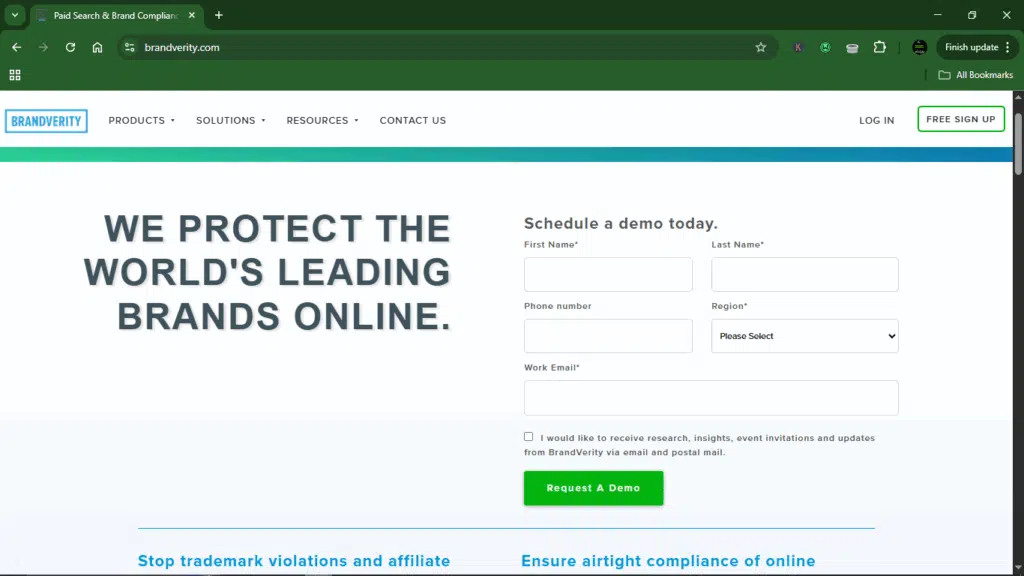
Teams use it to ensure partners comply with brand rules and to stop competitors from hijacking branded traffic. Its deep compliance workflows make it especially valuable for brands with large affiliate programs.
BrandVerity at a glance:
| Developer(s) | BrandVerity |
| Year launched | 2008 |
| Platform type | Web-based SaaS |
| AI capabilities | Automated ad monitoring + rule-based detection |
| Free version? | No |
| Starting price | Custom pricing |
Key features:
- Affiliate monitoring: Tracks affiliate behaviour to spot unauthorised brand keyword bidding.
- Trademark infringement detection: Identifies competitors misusing protected terms in paid search.
- Ad copy/URL verification: Flags misleading or unauthorised landing pages.
- Global search monitoring: Runs checks across major worldwide search engines.
- Automated alerts: It sends notifications when risky or suspicious activity is detected.
What I liked about BrandVerity:
- Powerful affiliate compliance tools.
- Screenshots and logs make enforcement easier.
- Great for global teams managing large affiliate channels.
What I didn’t like about BrandVerity:
- Like AdPolice, the pricing is opaque.
- Limited UI intuitiveness compared to more modern competitor dashboards.
2. The Search Monitor [Best for multi-channel ad monitoring]
The Search Monitor gives brands real-time visibility into how their name is used across paid search, shopping sites, and affiliate channels. Its SmartCrawler™ technology detects unauthorised brand bidding, affiliate hijacking, typosquatting, cloaked links, and other subtle violations, and can automatically submit trademark takedown requests.

With robust dashboards and competitive intel, it helps brands safeguard PPC budgets while spotting risks and opportunities across markets.
The Search Monitor at a glance:
| Developer(s) | The Search Monitor |
| Year launched | 2007 |
| Platform type | Web-based SaaS |
| AI capabilities | Automated detection and enforcement triggers |
| Free version? | No |
| Starting price | Custom pricing |
Key features:
- SmartCrawler™ Detection: Spots affiliates and competitors abusing brand terms.
- Trademark takedown automation: Submits removal requests instantly.
- Ad armour PPC optimisation: Improves campaign efficiency by removing ad waste.
- Global and multi-language support: Coverage across regions and markets.
- Custom dashboards: Centralise alerts and performance insights.
What I liked about The Search Monitor:
- Strong automation for trademark takedowns.
- Global, multilingual monitoring.
- Competitive intel and PPC optimisation built in.
What I didn’t like about The Search Monitor:
- Complex dashboards with a learning curve.
- Pricing isn’t transparent.
3. Adthena [Best for competitive intelligence and brand bidding protection]
Adthena is an AI-powered competitive intelligence and brand protection platform that helps companies understand how their brand is being targeted within paid search. It monitors who’s bidding on your branded keywords, how their ads are performing, and where threats might be emerging.

It’s powerful for brands that want deep visibility into PPC competition. It identifies who’s misusing your brand and how your paid strategy compares across the market.
Adthena at a glance:
| Developer(s) | Adthena Ltd. |
| Year launched | 2012 |
| Platform type | Web-based SaaS |
| AI capabilities | AI-driven analysis + automated detection |
| Free version? | No |
| Starting price | Custom pricing |
Key features:
- Competitor monitoring: See who’s bidding on your brand and how their ads perform.
- Market insights: Understand share of voice, visibility, and ad trends.
- Automated alerts: Real-time notifications for suspicious or infringing ads.
- Custom dashboards: Organise intel in the reporting format that fits your strategy.
- Search term intelligence: Identify keyword gaps + new opportunities.
What I liked about Adthena:
- Valuable competitive intel.
- Strong AI-based market analysis.
- Great for strategy and PPC optimisation.
What I didn’t like about Adthena:
- Takes time to leverage its feature depth fully.
- Pricing isn’t public.
4. Red Points [Best for eCommerce and anti-counterfeiting enforcement]
Red Points is a comprehensive brand protection platform designed to combat counterfeits, IP infringement, and online brand abuse across marketplaces, social media, websites, and other digital channels. Unlike tools focused mainly on paid search, it dives deep into product listings and seller activity to catch fake or unauthorised sellers before they harm your reputation. Automated detection and takedown workflows help brands reclaim revenue and maintain customer trust without drowning in manual enforcement.

Red Points at a glance:
| Developer(s) | Red Points Solutions, S.L. |
| Year launched | 2011 |
| Platform type | Web-based SaaS |
| AI capabilities | AI-powered detection + automated enforcement |
| Free version? | No |
| Starting price | Custom pricing |
Key features:
- Counterfeit Detection: Spots fake product listings across major marketplaces.
- IP enforcement: Monitors trademarks, copyrights, and brand assets for misuse.
- Automated takedowns: Sends removal requests; no manual chasing.
- Multi-channel monitoring: Marketplace, social, web, and reseller coverage.
- Case Management: Track infringements, enforcement actions, and outcomes.
- Domain Monitoring: Flags copycat websites and cybersquatting attempts.
What I liked about Red Points:
- Ideal for brands dealing with counterfeit products.
- Automated takedowns save tons of time.
- Integrates marketplace and social monitoring under one roof.
What I didn’t like about Red Points:
- Pricing tends to be expensive, especially for small businesses
- Overkill if you don’t sell physical goods.
5. BrandShield
BrandShield is a digital risk protection platform that helps companies safeguard their online presence across multiple channels. Its focus is on detecting phishing scams, fake websites, social media impersonation, and unauthorised brand use. BrandShield’s ability to take down fraudulent entities makes it an excellent choice for businesses concerned about reputation, customer trust, and global brand safety.
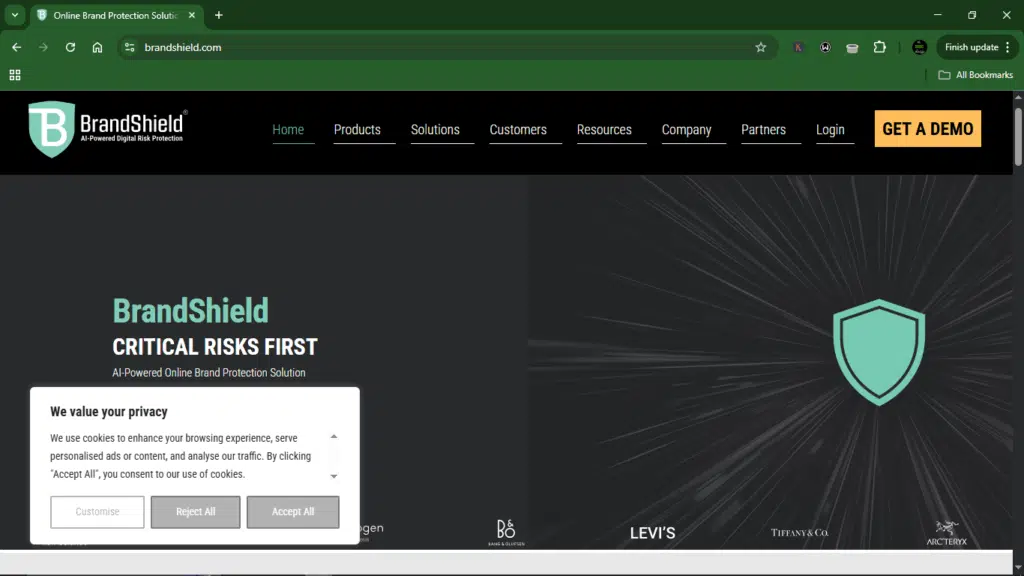
BrandShield at a glance:
| Developer(s) | BrandShield Ltd. |
| Year launched | 2013 |
| Platform type | Web-based SaaS |
| AI capabilities | Pattern detection, threat scoring, and automated risk classification |
| Free version? | No |
| Starting price | Custom pricing |
Key features:
- Phishing and fraud detection: Identifies fraudulent domains, emails, and landing pages targeting your brand.
- Social media monitoring: Detects impersonation attempts and fake accounts across major platforms.
- Brand abuse alerts: Provides real-time notifications of suspicious or malicious activity.
- Custom dashboards: Offers centralised threat insights and configurable reporting.
What I liked about BrandShield:
- Excellent threat detection extending beyond ads into broader brand risk.
- Strong phishing and impersonation discovery.
- Good reporting and enforcement workflows.
What I didn’t like about BrandShield:
- Some advanced setup requires onboarding time.
- Best suited for large organisations.
Pricing
Custom pricing.
6. Corsearch [Best for legal-grade IP]
Corsearch is a rights management and online enforcement platform designed for brands that require legal-grade protection of trademarks, copyrighted content, and digital assets. Beyond scanning marketplaces and websites, it helps organisations act quickly by supporting official takedowns backed by legal intelligence. It’s ideal for companies whose IP value is high enough that swift, documented enforcement is the priority.

Corsearch at a glance:
| Developer(s) | Corsearch / Incopro |
| Year launched | 2013 |
| Platform type | Web-based SaaS |
| AI capabilities | Automated detection, classification, and legal-risk scoring |
| Free version? | No |
| Starting price | Custom pricing |
Key features:
- Rights-based monitoring: Tracks trademark and copyright misuse across the web and marketplaces.
- Integrated legal workflows: Jump-start enforcement with structured, documented takedowns.
- Case and compliance management: Keeps a historical record of violations + actions.
- Global IP tracking: See where counterfeits and misuse are emerging, region by region.
What I liked about Corsearch:
- Strong legal and tech stack for enforcement.
- Excellent for trademark-heavy or global brands.
- Comprehensive compliance and reporting.
What I didn’t like about Corsearch:
- Pricing is enterprise-leaning.
- The platform can feel complex for small teams.
- Best value requires legal/IP expertise.
Pricing
Corsearch offers custom pricing tailored to each brand’s specific needs.
7. Marcode
Marcode focuses on spotting revenue-leak attacks in affiliate and paid-search channels, especially fast-moving hijacks and keyword abuse. Its machine-learning models watch traffic patterns in near real-time to catch manipulative tactics, such as forced redirects, unauthorised bidding, or spoofed landing pages. Because it focuses on fraud rather than general brand monitoring, it’s a powerful option for performance marketing teams.

Marcode at a glance:
| Developer(s) | Marcode |
| Year launched | 2023 |
| Platform type | Web-based SaaS |
| AI capabilities | Real-time fraud analysis and anomaly detection |
| Free version? | No |
| Starting price | Custom pricing |
Key features:
- Hijack pattern analysis: Detects redirects and brand-keyword misuse by affiliates.
- Real-time ad fraud signals: Flags click fraud + unauthorised PPC behaviour as it happens.
- Threat pattern learning: AI improves detection as new schemes emerge.
- Rapid-response alerts: Highlight the highest-risk incidents with suggested actions.
What I liked about Marcode:
- Fast, high-frequency monitoring.
- Strong focus on subtle, hard-to-spot fraud.
- Clear reports and fast alerts.
What I didn’t like about Marcode:
- Newer platform with a smaller ecosystem.
- Pricey for small brands.
- Limited historical footprint vs. incumbents.
Pricing
Custom pricing.
6 key factors to consider when choosing an AdPolice alternative
- Scope of monitoring. Look for tools that can track paid search, affiliate activity, marketplaces, social media platforms, and other forms of brand misuse. The broader the coverage, the easier it is to catch hijackers or counterfeiters before they damage your brand.
- Automation and alerts. Real-time alerts are crucial for identifying threats promptly. Bonus points for platforms that also automate enforcement (e.g., takedowns) so you don’t spend hours doing manual cleanup.
- Unique capabilities. Standout features include AI-driven fraud detection, automated ad takedowns, advanced competitor intelligence, and legal enforcement support.
- Usability and reporting. Beyond raw data, tools should provide clean dashboards, flexible reporting, and clear next-step recommendations.
- Geographic coverage. Global brands should prioritise platforms that monitor multiple countries, while regional companies should ensure coverage in their target markets.
- Search engine support. At a minimum, you’ll want support for Google + Bing.
Conclusion
The internet is anything but safe. From sneaky affiliates to fake stores and phishing clones, bad actors are working overtime. At the very least, we can work smarter.
The good news is that you have options. Just remember to choose based on what your brand actually needs, not what looks coolest on a sales page.
So, if AdPolice doesn’t feel like the one for you, that’s fine. The seven alternatives here offer solid coverage, rich features, and, in some cases, better pricing.
FAQs about AdPolice alternatives
Are cheaper alternatives as effective?
Sometimes. Lower-priced tools often monitor fewer channels or countries, so effectiveness depends on your brand’s footprint and risk level.
Can I monitor Google Shopping ads?
Yes, many top alternatives support Google Shopping. Please double-check coverage for your target regions to ensure accuracy.
How often should brand monitoring run?
If your brand runs high-value campaigns or collaborates with numerous affiliates, consider using hourly or real-time monitoring. Smaller brands can get by with daily scans.
Do these tools automatically remove violations?
Most detect and alert you. A few automated takedowns are available, but many still require manual or semi-manual actions, depending on the platform.
Can I switch between tools easily?
Pretty much. Many offer monthly plans, and even annual contracts often allow cancellation with notice, so you’re not locked in forever.
Disclaimer!
This publication, review, or article (“Content”) is based on our independent evaluation and is subjective, reflecting our opinions, which may differ from others’ perspectives or experiences. We do not guarantee the accuracy or completeness of the Content and disclaim responsibility for any errors or omissions it may contain.
The information provided is not investment advice and should not be treated as such, as products or services may change after publication. By engaging with our Content, you acknowledge its subjective nature and agree not to hold us liable for any losses or damages arising from your reliance on the information provided.
Always conduct your research and consult professionals where necessary.

